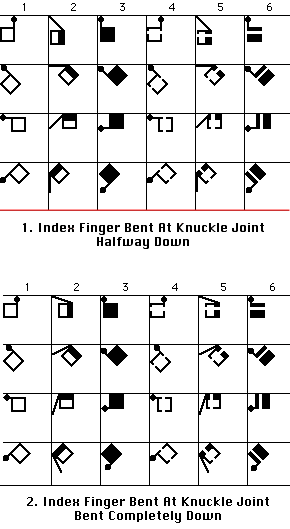|
SignWriting
List
February
9, 2000
QUESTION 0021:
The main problem has been "spelling."
In the sign for "today" in German Sign
Language, the index finger points down. There is
a slight bend at the knuckle joint. How do I "spell"
that sign?
ANSWER 0021:
In regards to spelling...remember that
just a few months ago, there were no signs being
written in SignWriting in Germany. So if there are
spelling changes to be made in the future...just
keep in mind what a short time it has been. It took
centuries to establish spelling rules for other
spoken languages, including English and German.
Your dictionary will go through many changes for
years to come, and that is normal for dictionary
development.
|
EXAMPLES 0021
A
classic example are the symbols in Example 0021.
They are very rarely used symbols. Here in the USA,
people bend the index finger at the knuckle joint
when they are doing the sign for "here",
but we don't bother to write that detail, because
if we write just a straight index finger without
a bend in the knuckle joint, people still can read
the sign in SignWriting....There are no confusions
with other signs...so since it cannot be mis-read,
why add the detail?
Only
add that detail if you really think the sign can
be misunderstood...a straight index finger is much
easier to read for everyone...so a detail like knuckle
joint bending is more for research I would guess...
Now,
if you want to write the knuckle joint bending,
then use the symbol in Example 0021. The symbol
has two variations. The first one shows the bend
half way, and the second one all the way. The reason
there is a gap or space on the square for the fist,
and not at the finger area like we do in the straight
index finger, is because the second variation would
be harder to read without some finger line connecting
it to the square for the fist... |





































































